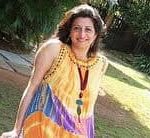New Delhi: In the original land of the big fat unending wedding, it seemed like a no-brainer. Yet, it’s hard to imagine that up until 25 years ago there were no such things as wedding planners in India.
There was the family astrologer to match the horoscopes; an entire team of cooks who would pitch tent for days of feasting; the neighbourhood aunties to do the decorations—but no wedding planners.
There was no place for an outsider to parachute in and plan your wedding.
Meher Sarid wanted to change all that.
“Weddings were very different then. People used to love to do these things — they didn’t think it was a headache. People had time. Not a lot of women were working so people were at home,” says Sarid, 45, one of India’s first wedding planners.
Today, the industry generates business worth nearly $40 billion a year and is growing at nearly 20% a year. According to a Mint article in December 2015, India is just behind the US wedding market at $50 billion and likely to overtake it soon.
Born in Secunderabad, Hyderabad, Sarid came to the business with a degree in hotel management. At the end of her degree, she joined ITC Sheraton hotel, Delhi in 1989, where she managed banquets. By this time, she already knew she wanted to do weddings. While working in Sheraton, Sarid would flip through international magazines in the hotel’s book lounge. “I used to see these magazines and get excited that there is so much design out there and why can’t this design come here, why are we so stuck?”
Sarid’s first wedding was a bit of a challenge because everyone involved in this unorganized “shaadi-business” was so comfortable with what they were already doing. “All I would see is a standard phool wala, who would put some phool ki ladi (strings of flowers).
“So I asked ‘why aren’t we doing cut flowers, more Japanese style’. The florist was scratching his head, everyone was saying ‘what the hell is going on here’,” she recollects. She didn’t do much in that wedding, she says. She just took cane baskets with flowers, painted them white and hung them down from the ceiling.
That was 1992, a year after liberalization. The choices were growing for Indians, and Sarid wanted to know what was happening in the world of weddings. “Since there was no Internet, the only way to do was to go out there physically — to travel,” she says.
But travelling abroad wasn’t easy. Air tickets were expensive. Sarid’s father was in the army, and travelling abroad wasn’t something he could afford.
So in December 1992, Sarid quit her job and joined Cathay Pacific Airways as an airline crew. This meant travel—lots of it and for free. In the meantime she had joined a distance learning course in wedding management taught from Salzburg, Austria.
Back home, she had already set up her company in 1992. Her first cheque in the 1990s was somewhere around ₹ 1.5 lakh, which was “huge”, she says.
Still, it was mostly the wealthy, influential, high-profile people who sought her services. That started changing around early 2000 with the arrival of the new rich.
“Public farmhouses started coming up, common garden areas in communities became available for weddings, community centres opened up and even the middle classes started looking for planners.”
Sarid has created a Paris in a farmhouse, flown in a BMW sports car, and had choppers land for a girl’s 18th birthday.
“Someone who had sold a large piece of land to a builder became the new rich,” says Sarid.
“And what the new rich would do would filter down.
“Most of the new rich had not really travelled. For them, the theme would be red-and-white. For the old money, it would be, let’s say, the Garden of Eden.”
This is the 28th part in a series marking the 25th anniversary of India’s liberalization.


